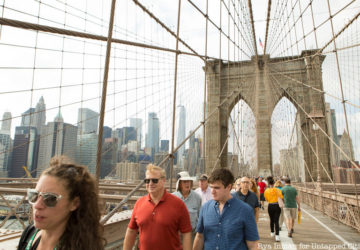5. Grace Hartigan and Helen Frakenthaler
The Abstract Expressionist Movement was again another manifestation of the Beat Generation, but this time through the avenue of the visual arts. It would be the tenacity and boldness of the post World War II movement that would move the epicenter of fine art from Paris to New York City.
Although not necessarily considered at the forefront of the movement (Jackson Pollock or William de Kooning are generally thought of as the expressionist heavy hitters), both Hartigan and Frankenthaler were deep in the mix. They not only provided arguably the strongest female voices within the male-dominant fine art movement, but also shared a deep connection with each other.
As seen first-hand in a 1968 Oral history interview with Helen Frankenthaler from the Smithsonian’s archive of American art, the two women spent the budding of their abstract expressionist careers side-by-side. Hartigan was among the very first group of New York City artists, as Frankenthaler’s then boyfriend, art critic Clement Greenberg, would introduce her in 1950. From there, the two were in their first group show together for John Meyer’s studio the following year and continued on, solidifying themselves in the “The Artist’s Club.” Located at 39 East 8th Street, Frankenthaler recalls that “The Club” was where her and her comrades in expressionism would go Friday evenings as a place for discussion and criticism.
Another notable abstract expressionist hangout was The Cedar Bar. Although originally located at 24 University Place, Cedar Tavern as it’s currently called, now resides at 82 University Place. Next to “The Club,” artist and club veteran, Jeanne Miles, describes The Cedar Bar as “a home away from home” for many of the artists. “The talk was always about art, and there were fights, but the issues were aesthetic,” Miles said. “The atmosphere provided nourishment for many struggling artists who later became successful.”





